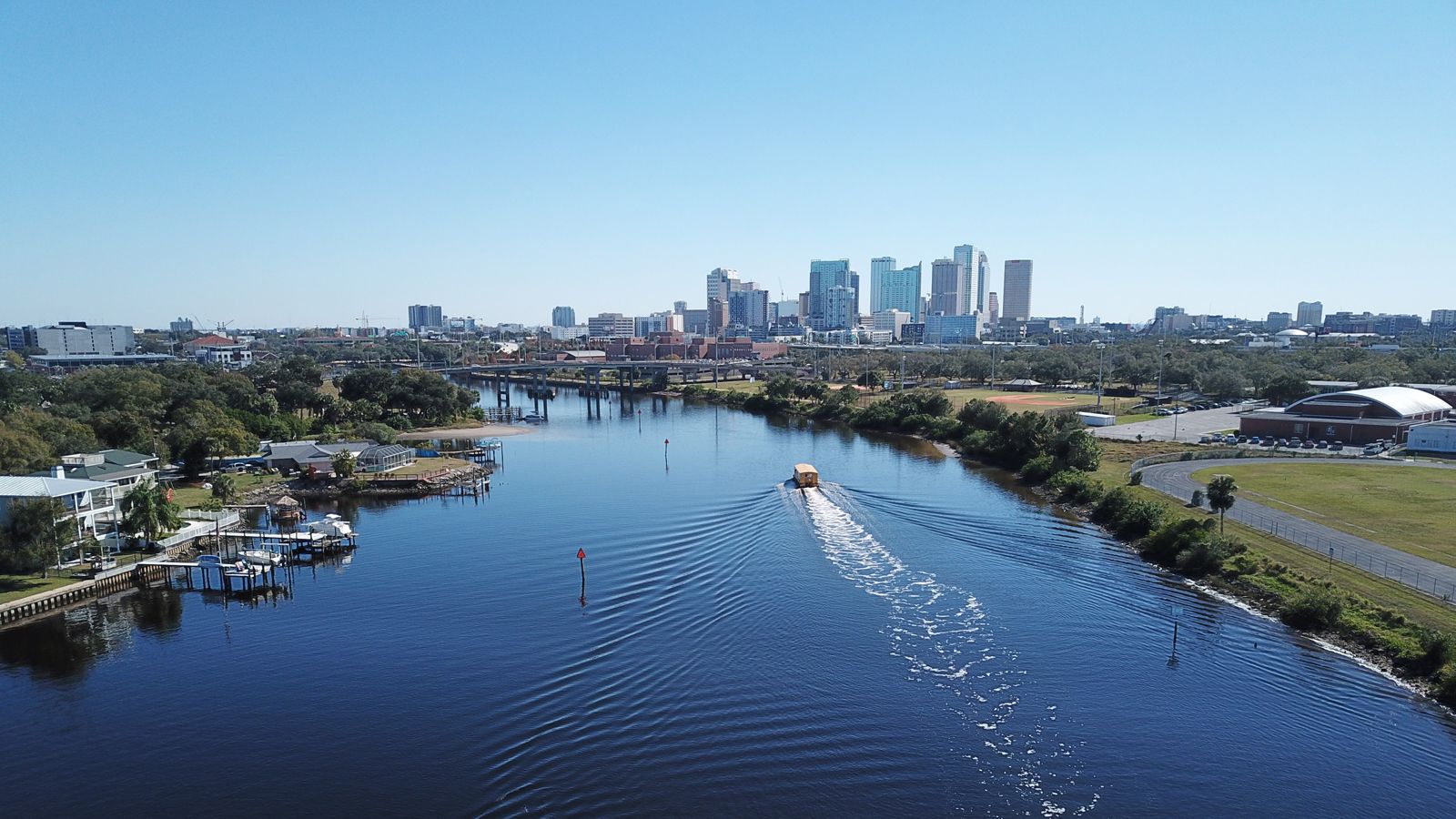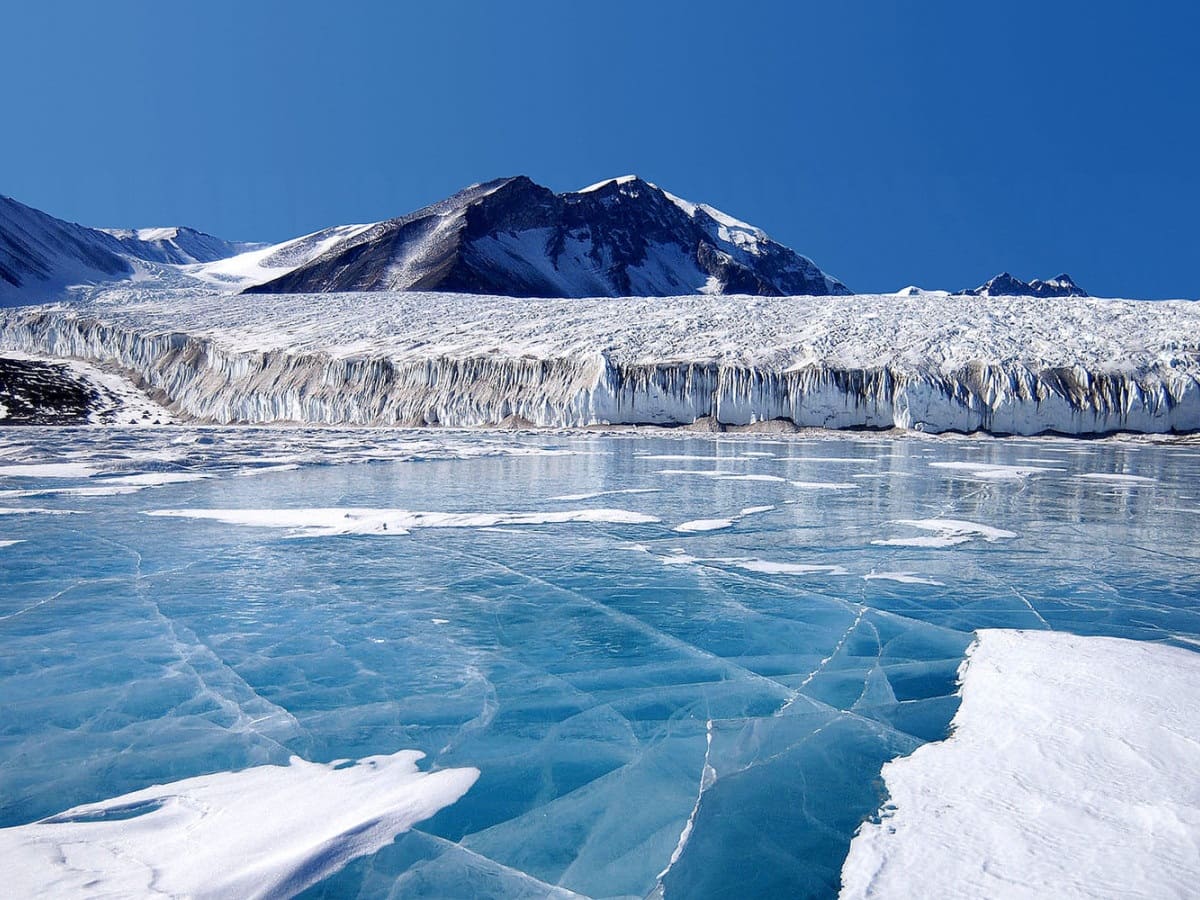Home>Weather and Climate>Understanding The Water Temperature Of Utah Lakes


Weather and Climate
Understanding The Water Temperature Of Utah Lakes
Modified: April 28, 2024
Discover the weather and climate impact on Utah lake temperatures. Gain insights into the water temperature variations for a better understanding of local aquatic conditions.
(Many of the links in this article redirect to a specific reviewed product. Your purchase of these products through affiliate links helps to generate commission for Temperatures.com, at no extra cost. Learn more)
Table of Contents
- Introduction
- Factors Affecting Water Temperature
- The Importance of Water Temperature in Utah Lakes
- Methods of Measuring Water Temperature
- Seasonal Variations in Water Temperature
- Impact of Water Temperature on Aquatic Life
- Human Activities and Water Temperature Changes
- Managing Water Temperature for Conservation
Introduction
Water temperature plays a crucial role in shaping the characteristics of lakes and other bodies of water. It is a dynamic factor that influences various aspects of aquatic ecosystems, from the behavior of aquatic organisms to the overall health of the environment. In the context of Utah, the water temperature of its lakes is a topic of significant interest and importance.
Utah is renowned for its stunning natural landscapes, including numerous lakes that attract visitors and locals alike. Understanding the water temperature of these lakes is essential for various reasons, ranging from recreational activities to environmental conservation efforts. The temperature of a lake's water can have far-reaching effects on its ecology, recreational usability, and overall sustainability.
In this article, we will delve into the intricate details of water temperature in Utah lakes, exploring the factors that influence it, its seasonal variations, and its impact on aquatic life. Additionally, we will examine the methods used to measure water temperature, the significance of this data, and the implications for conservation efforts. By gaining a deeper understanding of the water temperature in Utah lakes, we can appreciate the delicate balance of nature and the importance of preserving these invaluable aquatic ecosystems.
The exploration of water temperature in Utah lakes is not merely a scientific endeavor; it is a journey that allows us to connect with the natural world and recognize the profound influence of this seemingly simple yet vital aspect of our environment. Join us as we unravel the mysteries of water temperature and its significance in the picturesque lakes of Utah.
Factors Affecting Water Temperature
The water temperature of lakes is influenced by a myriad of factors, both natural and human-induced. Understanding these factors is essential for comprehending the complex dynamics of lake ecosystems and the fluctuations in water temperature. Here are the key factors that affect the water temperature of Utah lakes:
1. Solar Radiation
Solar radiation is a primary driver of water temperature in lakes. The amount of sunlight reaching the water's surface directly impacts its temperature. In Utah, where the sun shines brightly for a significant portion of the year, solar radiation plays a pivotal role in heating the surface waters of lakes.
2. Seasonal Variations
The changing seasons exert a profound influence on water temperature. During the summer months, the increased intensity of solar radiation leads to higher water temperatures, creating warm surface layers in the lakes. Conversely, in winter, the reduced solar input causes the water temperature to decrease, often resulting in the formation of distinct thermal layers within the lakes.
3. Depth and Topography
The depth and topography of a lake significantly affect its thermal characteristics. Shallow lakes tend to heat up more quickly and exhibit greater temperature variations than deeper lakes. Additionally, the presence of underwater features such as submerged rocks, cliffs, and vegetation can create localized temperature variances within the lake.
4. Water Source
The source of water feeding into a lake can impact its temperature. Lakes receiving inflows from snowmelt or glacial sources tend to have colder water, especially during the spring and early summer. In contrast, lakes fed by warmer groundwater sources may exhibit relatively higher temperatures.
5. Human Activities
Human activities, such as urban development, agriculture, and industrial processes, can contribute to changes in water temperature. Runoff from urban areas and agricultural lands can introduce excess nutrients and pollutants into lakes, affecting their thermal characteristics. Furthermore, the construction of dams and reservoirs can alter the natural flow patterns and thermal stratification of lakes.
6. Climate Change
The overarching influence of climate change cannot be overlooked when considering factors affecting water temperature. Rising global temperatures and altered precipitation patterns can lead to shifts in the thermal regimes of lakes, impacting their ecosystems and the distribution of aquatic species.
By recognizing and studying these factors, scientists and conservationists can gain valuable insights into the intricate mechanisms governing the water temperature of Utah lakes. This understanding is crucial for implementing effective management strategies and preserving the ecological balance of these natural wonders.
The Importance of Water Temperature in Utah Lakes
The water temperature of Utah lakes holds immense significance due to its profound impact on various ecological, recreational, and conservation-related aspects. Understanding the importance of water temperature in these aquatic ecosystems is essential for fostering a deeper appreciation of their delicate balance and the need for sustainable management practices.
Read more: Minnesota Lake Temperature Guide
Ecological Balance
Water temperature plays a pivotal role in shaping the ecological balance of Utah lakes. It directly influences the distribution, behavior, and life cycles of aquatic organisms, including fish, amphibians, and invertebrates. Different species exhibit specific temperature preferences, and variations in water temperature can affect their reproductive success, feeding patterns, and overall survival. By maintaining suitable water temperatures, the ecological integrity of these lakes can be preserved, ensuring the continued existence of diverse aquatic life forms.
Recreational Usability
The water temperature of lakes significantly impacts their recreational usability, particularly for activities such as swimming, boating, and fishing. Warmer water temperatures during the summer months enhance the appeal of these recreational pursuits, attracting visitors and outdoor enthusiasts. Conversely, understanding the seasonal variations in water temperature enables individuals to make informed decisions regarding the timing and suitability of recreational activities, contributing to a safer and more enjoyable experience for lake-goers.
Conservation Efforts
Water temperature data is instrumental in guiding conservation efforts aimed at protecting the natural habitats and biodiversity of Utah lakes. By monitoring and analyzing changes in water temperature, conservationists can identify potential environmental stressors, such as pollution or habitat degradation, that may be impacting the lakes. This information serves as a valuable tool for implementing targeted conservation measures and mitigating the adverse effects of human activities on these fragile ecosystems.
Sustainable Management
The importance of water temperature in Utah lakes extends to the realm of sustainable management practices. By comprehensively understanding the thermal dynamics of these lakes, resource managers can develop strategies to maintain optimal water temperatures, minimize the risk of ecological imbalances, and support the long-term sustainability of the lakes. This proactive approach to management aligns with the broader goal of preserving Utah's natural resources for future generations.
In essence, the significance of water temperature in Utah lakes transcends mere scientific curiosity; it permeates every aspect of these natural wonders, from their ecological resilience to their recreational allure. By recognizing and appreciating the importance of water temperature, we can foster a deeper sense of stewardship and responsibility towards these invaluable aquatic ecosystems, ensuring their continued vitality and beauty for generations to come.
Methods of Measuring Water Temperature
Accurately measuring water temperature in lakes is essential for understanding the thermal dynamics of these aquatic environments. Scientists and researchers employ various methods to gather precise temperature data, enabling them to monitor changes, identify trends, and assess the overall health of the lakes. The following are the primary methods used to measure water temperature in Utah lakes:
-
In-Situ Temperature Sensors: In-situ temperature sensors, such as thermistors and thermocouples, are deployed directly into the water at different depths to record temperature readings. These sensors are equipped with data loggers that capture continuous temperature data over specific time intervals. By strategically placing these sensors at varying depths, researchers can obtain a comprehensive profile of the lake's thermal stratification and vertical temperature gradients.
-
Remote Sensing Technologies: Remote sensing technologies, including satellite-based sensors and aerial thermal imaging, offer a broader perspective on water temperature dynamics. Satellite-based sensors can capture surface water temperatures over large areas, providing valuable insights into spatial variations and seasonal trends. Aerial thermal imaging, often conducted using drones, enables high-resolution mapping of surface temperatures and can be particularly useful for monitoring smaller or hard-to-access lakes.
-
Buoy-Mounted Monitoring Systems: Buoy-mounted monitoring systems are equipped with temperature sensors and data logging capabilities. These buoys are strategically positioned in lakes to continuously collect temperature data at specific locations. These systems are valuable for long-term monitoring and can provide real-time temperature information, aiding in the assessment of diurnal and seasonal temperature fluctuations.
-
Depth Profiling Instruments: Instruments such as CTD (Conductivity, Temperature, Depth) profilers are used to conduct vertical temperature profiles within lakes. These instruments are lowered into the water column and capture temperature readings at different depths. By integrating temperature measurements with other water quality parameters, researchers can gain a comprehensive understanding of the lake's thermal structure and its relationship to other environmental factors.
-
Citizen Science Initiatives: Citizen science programs engage volunteers in monitoring water temperature through simple yet effective methods. Participants use handheld thermometers or digital temperature probes to collect temperature data from designated locations on the lakeshore. These community-driven efforts not only contribute valuable data but also foster public awareness and involvement in lake conservation and monitoring.
By employing these diverse methods, researchers can obtain a multifaceted understanding of water temperature dynamics in Utah lakes. The combination of in-situ measurements, remote sensing technologies, buoy-based monitoring, depth profiling, and citizen science initiatives enables a comprehensive assessment of the thermal characteristics of these vital aquatic ecosystems. This wealth of temperature data serves as a cornerstone for informed decision-making, conservation efforts, and the sustainable management of Utah's lakes.
Seasonal Variations in Water Temperature
Seasonal variations exert a profound influence on the water temperature of Utah lakes, shaping the thermal dynamics and ecological processes within these aquatic ecosystems. Understanding the fluctuations in water temperature throughout the year is essential for comprehending the seasonal patterns of thermal stratification, the impact on aquatic life, and the overall resilience of the lakes.
During the spring, as the snowmelt from the surrounding mountains flows into the lakes, the water temperature undergoes a gradual transition. The influx of colder water from melting snow contributes to a decrease in the overall temperature of the lakes. This period marks the onset of thermal mixing, where the water column experiences uniform temperatures due to the absence of distinct thermal layers. As spring progresses into early summer, the increasing solar radiation and air temperatures lead to a gradual warming of the surface waters. This rise in temperature creates a stratified thermal profile within the lakes, with a distinct warm surface layer overlaying the cooler, denser water below.
The summer months herald the peak of water temperature in Utah lakes, with surface temperatures reaching their highest levels. The intense solar radiation and prolonged daylight hours contribute to the heating of the surface waters, making them conducive for recreational activities such as swimming and boating. The establishment of thermal stratification during this period results in stark temperature differences between the surface and deeper layers of the lakes. This stratified structure plays a vital role in shaping the distribution and behavior of aquatic organisms, as different species seek out their preferred thermal habitats within the lake.
As autumn approaches, the diminishing solar input and cooler ambient temperatures initiate the breakdown of thermal stratification. The lakes undergo a process known as fall turnover, where the surface waters gradually cool, eventually reaching equilibrium with the deeper layers. This mixing of the water column homogenizes the temperature distribution, setting the stage for the onset of winter conditions.
Winter brings a significant drop in water temperature, particularly in the surface layers of the lakes. The reduced solar radiation and frigid air temperatures cause the surface waters to cool rapidly, often leading to the formation of a distinct cold layer. Beneath this cold layer, the deeper waters remain relatively stable, maintaining a temperature close to the maximum density point of water. This stratified thermal structure persists throughout the winter, creating a thermal refuge for cold-adapted species and influencing the overall ecological dynamics of the lakes.
By comprehensively understanding these seasonal variations in water temperature, researchers and conservationists can gain valuable insights into the annual thermal cycles of Utah lakes. This knowledge serves as a cornerstone for implementing targeted conservation measures, assessing the impact of climate change, and fostering a deeper appreciation of the intricate interplay between seasonal dynamics and the thermal characteristics of these captivating aquatic ecosystems.
Impact of Water Temperature on Aquatic Life
The water temperature of Utah lakes exerts a profound influence on the diverse array of aquatic life inhabiting these ecosystems. From fish and amphibians to microscopic organisms, the thermal characteristics of the water play a pivotal role in shaping the behavior, distribution, and overall well-being of aquatic species.
Reproductive Success: Water temperature directly impacts the reproductive success of many aquatic organisms. For example, certain fish species exhibit specific temperature requirements for successful spawning. In Utah lakes, the timing and duration of optimal water temperatures are critical factors for the successful reproduction of native fish species, contributing to the maintenance of healthy populations and ecological balance.
Feeding Patterns: The temperature of the water influences the metabolic rates and feeding patterns of aquatic organisms. Warmer water temperatures often accelerate metabolic processes, leading to increased energy expenditure for fish and other species. Conversely, colder water temperatures can slow down metabolic rates, affecting the feeding behavior and growth rates of aquatic organisms. Understanding these temperature-mediated effects is essential for assessing the overall productivity and food web dynamics within Utah lakes.
Habitat Selection: Aquatic organisms exhibit distinct preferences for specific temperature ranges, leading to the selection of thermal habitats that suit their physiological needs. For example, cold-water fish species such as trout seek out cooler, oxygen-rich habitats during the warmer months, while warm-water species may congregate in shallower, sun-warmed areas. The availability of suitable thermal habitats directly influences the spatial distribution and abundance of aquatic life within the lakes.
Survival and Adaptation: Extreme fluctuations in water temperature can pose significant challenges to aquatic organisms. Sudden temperature changes, particularly rapid increases in water temperature, can stress and even endanger certain species. Additionally, long-term shifts in water temperature, whether due to natural variability or human-induced factors, can impact the long-term survival and adaptation of aquatic species. Understanding these thermal stressors is crucial for assessing the resilience of Utah's aquatic ecosystems and implementing conservation measures to mitigate potential threats.
Ecosystem Dynamics: The interplay between water temperature and aquatic life extends beyond individual species, influencing the broader ecological dynamics of Utah lakes. Temperature-mediated interactions, such as predator-prey relationships and competitive behaviors, shape the intricate web of life within these aquatic environments. Moreover, the thermal preferences and tolerances of key species contribute to the overall structure and functioning of the lake ecosystems, highlighting the interconnectedness of water temperature and ecological resilience.
By recognizing the multifaceted impact of water temperature on aquatic life, researchers and conservationists can gain valuable insights into the complex interdependencies within Utah lakes. This understanding serves as a cornerstone for informed conservation strategies, sustainable management practices, and the preservation of the diverse and vibrant aquatic communities that contribute to the ecological richness of these captivating natural wonders.
Human Activities and Water Temperature Changes
Human activities exert a significant influence on the water temperature of Utah lakes, contributing to both short-term fluctuations and long-term thermal changes within these aquatic ecosystems. The interaction between human interventions and water temperature dynamics underscores the intricate relationship between anthropogenic factors and the thermal characteristics of lakes.
Read more: Average Monthly Temperatures In Utah
Urban Development and Land Use
The expansion of urban areas and associated land use practices can impact water temperature through various mechanisms. Urbanization often leads to increased impervious surfaces, such as roads and parking lots, which can elevate water temperatures in lakes through the urban heat island effect. Additionally, stormwater runoff from urban areas can introduce excess heat, pollutants, and nutrients into lakes, potentially altering their thermal regimes. The cumulative effect of urban development on water temperature underscores the need for sustainable land use planning and stormwater management practices to mitigate these impacts.
Agricultural Practices and Runoff
Agricultural activities, including irrigation and the application of fertilizers and pesticides, can influence water temperature in lakes. Agricultural runoff, particularly during periods of heavy precipitation or irrigation, can transport sediments, nutrients, and agrochemicals into lakes, potentially affecting their thermal characteristics. Nutrient enrichment from agricultural runoff can stimulate algal growth, leading to increased water temperatures through the absorption of solar radiation. The management of agricultural practices and the implementation of best management practices are essential for minimizing the impact of agricultural runoff on water temperature and overall lake health.
Industrial Processes and Thermal Discharges
Industrial facilities, such as power plants and manufacturing operations, may release heated effluents into lakes, leading to localized increases in water temperature. Thermal discharges from industrial processes can create thermal plumes, altering the natural thermal stratification of lakes and affecting the habitats of aquatic organisms. Regulatory measures, such as the implementation of cooling technologies and the monitoring of thermal discharges, are crucial for mitigating the potential impacts of industrial activities on water temperature and preserving the ecological integrity of lakes.
Recreational Activities and Shoreline Development
Recreational activities, shoreline development, and the construction of marinas and docks can influence water temperature dynamics in lakes. The removal of shoreline vegetation, the alteration of natural shorelines, and the introduction of impermeable surfaces can contribute to increased water temperatures through the reduction of shading and the modification of nearshore habitats. Furthermore, the operation of motorized watercraft can lead to the mixing of surface waters, potentially impacting thermal stratification. Sustainable shoreline management practices and the promotion of responsible recreational activities are essential for minimizing the human-induced alterations to water temperature in lakes.
Climate Change and Anthropogenic Influences
The overarching influence of climate change, driven by human activities, poses a pervasive threat to the water temperature of Utah lakes. Rising global temperatures, altered precipitation patterns, and the intensification of extreme weather events can lead to shifts in the thermal regimes of lakes. The cumulative impact of human-induced climate change on water temperature underscores the urgency of implementing mitigation and adaptation strategies to safeguard the thermal resilience of these vital aquatic ecosystems.
In essence, the intricate interplay between human activities and water temperature changes in Utah lakes highlights the need for proactive management, sustainable development practices, and the integration of conservation efforts with societal needs. By recognizing the multifaceted nature of human-induced impacts on water temperature, stakeholders can work towards fostering a harmonious coexistence between human activities and the preservation of the thermal integrity of Utah's picturesque lakes.
Managing Water Temperature for Conservation
Managing water temperature in Utah lakes is paramount for the conservation and sustainable management of these vital aquatic ecosystems. By implementing targeted strategies to maintain optimal water temperatures and mitigate the impacts of human activities, conservationists and resource managers can safeguard the ecological integrity and resilience of the lakes.
1. Riparian Vegetation Preservation
Preserving and restoring riparian vegetation along the shorelines of Utah lakes is essential for regulating water temperature. Healthy riparian zones provide shading, which helps to mitigate excessive heating of the water surface. The presence of vegetation also contributes to the stabilization of shoreline habitats, reducing erosion and sedimentation that can influence water temperature dynamics.
2. Stormwater Management
Effective stormwater management practices are crucial for minimizing the impact of urban and agricultural runoff on water temperature. Implementing green infrastructure, such as vegetated swales and permeable surfaces, can help to reduce the influx of heat, pollutants, and nutrients into lakes. By managing stormwater effectively, the thermal characteristics of the lakes can be preserved, supporting the overall health of the aquatic ecosystems.
Read more: Monthly Destin Water Temperature Guide
3. Sustainable Land Use Planning
Integrating sustainable land use planning measures, such as low-impact development techniques and the preservation of natural landscapes, can contribute to the conservation of water temperature in Utah lakes. Balancing urban development with the protection of critical habitats and water quality buffers is essential for minimizing the anthropogenic impacts on lake temperatures.
4. Thermal Discharge Regulation
Regulating thermal discharges from industrial facilities and power plants is essential for preventing localized increases in water temperature. The implementation of stringent environmental regulations and the adoption of advanced cooling technologies can help to minimize the thermal impact on lakes, preserving the natural thermal stratification and thermal habitats of aquatic organisms.
5. Climate Change Adaptation
Developing adaptive strategies to address the impacts of climate change on water temperature is crucial for long-term conservation efforts. This may involve the implementation of measures to enhance the resilience of lake ecosystems to temperature fluctuations, as well as broader initiatives to mitigate the drivers of climate change through sustainable practices and advocacy.
By integrating these proactive measures into conservation and management plans, stakeholders can work towards ensuring the sustainable preservation of the water temperature in Utah lakes. This holistic approach not only supports the ecological balance and vitality of the lakes but also fosters a harmonious coexistence between human activities and the conservation of these invaluable aquatic ecosystems.









